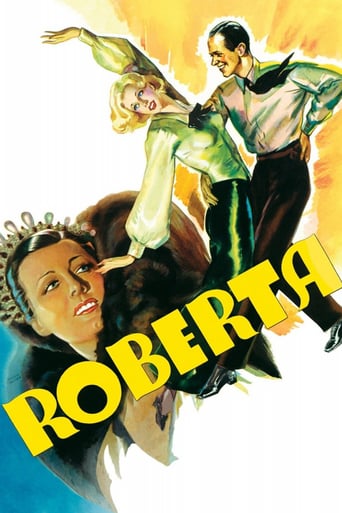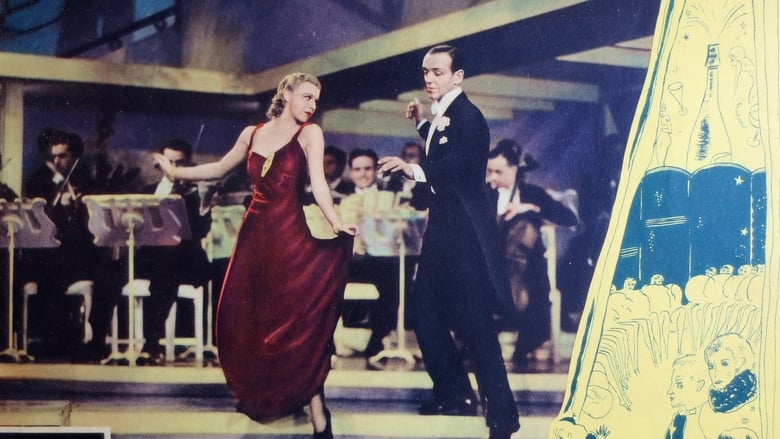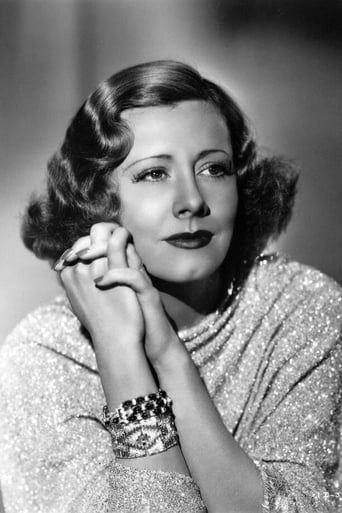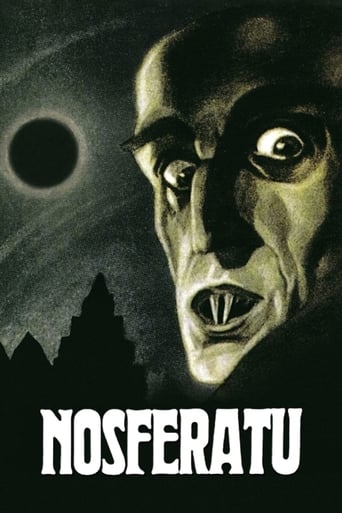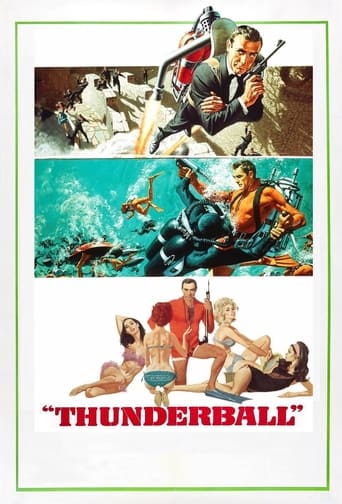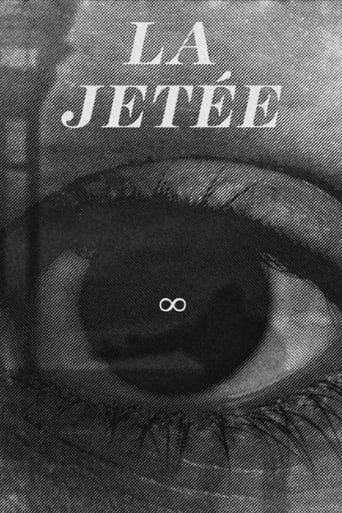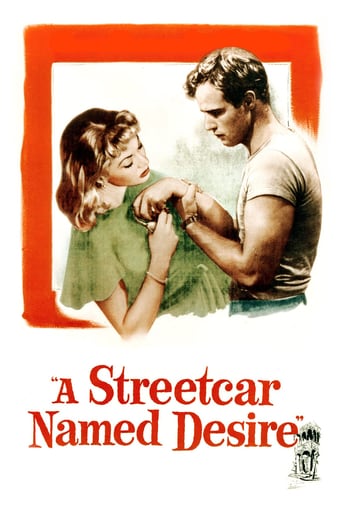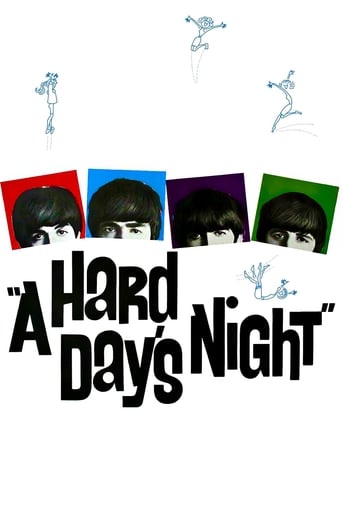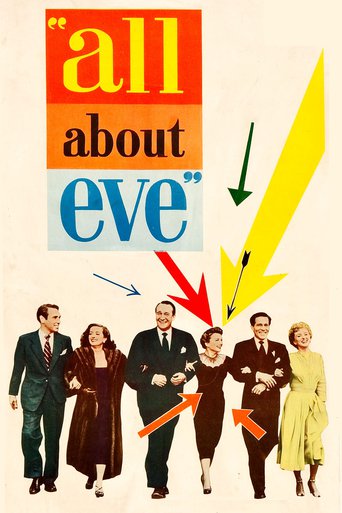Roberta (1935)
Football player John Kent tags along as Huck Haines and the Wabash Indianians travel to an engagement in Paris, only to lose it immediately. John and company visit his aunt, owner of a posh fashion house run by her assistant, Stephanie. There they meet the singer Scharwenka (alias Huck's old friend Lizzie), who gets the band a job. Meanwhile, Madame Roberta passes away and leaves the business to John and he goes into partnership with Stephanie.
Watch Trailer
Cast


Similar titles
Reviews
Good movie but grossly overrated
Good concept, poorly executed.
I cannot think of one single thing that I would change about this film. The acting is incomparable, the directing deft, and the writing poignantly brilliant.
Actress is magnificent and exudes a hypnotic screen presence in this affecting drama.
Copyright 26 February 1935 by RKO Radio Pictures, Inc. New York opening at the Radio City Music Hall: 7 March 1935. U.S. release: 8 March 1935. 12 reels. 105 minutes. SYNOPSIS: American band manager in Paris falls for a Russian princess who is working as a designer for his aunt's fashion salon.NOTES: Roberta opened on Broadway in 1933 and ran a most satisfactory 295 performances. Tamara had the lead role as Stephanie, Ray Middleton was Kent, Bob Hope was Huck Haines, Lyda Roberti was Sophie Teale, Fay Templeton was Roberta. Also in the cast Sidney Greenstreet as Lord Delves, George Murphy and Fred MacMurray. The Ginger Rogers character did not appear in the stage play at all. Odd then that Ginger bases her performance on Miss Roberti's, complete with thick accent and mannered gestures. The play was directed by Hassard Short, produced by Max Gordon.The song "Lovely To Look At" with music by Jerome Kern, lyrics by Dorothy Fields and Jimmy McHugh, was written especially for the film and nominated for an Academy Award for Best Song, losing to "Lullaby of Broadway" from Gold Diggers of 1935. Roberta placed 9th in the Film Daily's annual poll of American film critics. Negative cost: $610,000. Initial domestic rentals gross: $1,467,000. Initial foreign rentals gross: $868,000. Studio profit after paying advertising, print and distribution expenses: $770,000. Second to Top Hat as RKO's top-grossing release of 1935. Re-made by MGM in 1952 as Lovely To Look At.COMMENT: Although she has the melodic "Smoke Gets In Your Eyes" number (plus a couple of lullabies for Helen Westley, including the pleasantly nostalgic "Yesterdays") and though she is shimmeringly photographed (though not so well recorded and her costumes alas sometimes unflatteringly dated), Irene Dunne (she receives top billing as "The Golden Girl with the Silver Song" too!) is upstaged in this piece by Fred Astaire and Ginger Rogers. Fred and Ginger have all the best lines and most of the best songs and to make their triumph complete they dance "Smoke Gets In Your Eyes" too! Fred's easy, assured charm, his confident, sparkling personality (his way with dialogue seems as effortlessly smooth as his dancing) makes him rise right above the dated theatrical plot that often threatens to swamp Miss Dunne and all but drowns her luckless co- star Randolph Scott who is often gauche and never less than ill-at- ease as the oh-so-conventional hero of this piece. Ginger has a chance to play the comedienne and she pours on the phony accent with amusing emphasis, wears flattering costumes and dances with style and panache. Helen Westley does okay by her brief part (she plays the Roberta of the title!), Claire Dodd plays the femme fatale with narrowed-eyes skill, Lucille Ball can be glimpsed as a mannequin, while Candy Candido and his orchestra are as swinging a band as any lover of Kern's songs could wish. It seems likely that the original stage play had some harsh or even satirical things to say about women's fashions but little of this remains in the film, though fashion showings still figure largely in the footage. Still what they lack in taste they make up in curiosity appeal and some of the mannequins themselves are lovely. Credits are smooth and all in all despite the sometimes painfully silly Dunne-Scott story-line, Roberta is delightful entertainment.OTHER VIEWS: It says much for the talents of Ginger and Fred that they steal the show even though they are forced to play second fiddle here to a lumbering romantic plot involving the regal but somewhat dowdy Irene Dunne (as a fashion designer she's certainly no great shakes at designing her own clothes) and a not over-bright band manager of rather limited vocabulary, played with too much enthusiasm and too little charm by Randolph Scott. (In the Broadway play, the hero is a football hero, which certainly suits his character and dialogue far more appropriately). A stronger director than Seiter would have insisted on downgrading this she-loves-me she-loves-met-not malarkey in order to showcase Rogers and Astaire. But as it is, the film could be improved by skillful cutting. Ginger is superb, both as a dancing partner and a deliciously accurate impersonator of Lyda Roberti, whose heavy-as-a-samovar accent and girlishly hammy mannerisms she parodies with such gusto. Whenever the camera focuses on Ginger and Fred, the film comes brilliantly alive with their energetic dancing and spirited playing. In fact they dance and dally, saunter and sing with such infectious enthusiasm, it doesn't really matter that the movie is stuck with Dunne (though she does have a couple of the now famous songs) and Scott -- plus some cornball comedy with Luis Alberni and some sentimental tosh with Helen Westley — as well. If Seiter is slow at attacking his script, at least he makes good use of some wonderful sets and shows off Jane Hamilton to advantage. He also allows Astaire to show off his gloriously rhythmic skills from smooth camera angles without annoying reaction shots of the audience and other awkward cuts that interrupt the flow. I must admit I'm not overfond of the opening novelty organ interlude and that I could also do without that bit where banjoist Gene Sheldon catches his thumb in his instrument. But the fashion shows now have a novelty appeal and some of the costumes are stunning too, — one of the most striking, a plumed and feathered evening gown modeled by an easily recognizable Lucille Ball.
Fred Astaire and Ginger Rogers. To most, the names conjure up certain films: Top Hat, Swing Time, Shall We Dance. FG have a surprisingly large amount of "unknown" films, some of which arguably deserve their status, some of which arguably don't. Roberta is one of the latter. To me, it's the most undeservedly underrated of the FG films.Roberta doesn't emphasize the FG partnership. They are, like Follow the Fleet, the "second fiddle" couple. It could be called only technically a FG film; however, in the limited screen time they have, Fred and Ginger create a believable relationship, breathing life into their characters. That's the most important part of Roberta - its characters, as frothy as they may be, feel alive.Roberta is not like any of the popular FG films. It's not a silly confection brimming with antics. It has no Edward Everett Horton, Victor Moore, or Erik Blore. Of course, there isn't anything wrong with the silly confections - I enjoy them myself - but the added dimensions of Roberta give it that special life. It has poignancy, for all its fluffy subject matter. Like milk chocolate sprinkled with salt, it doesn't leave an overly sweet aftertaste; instead it leaves a sense of warmth because its happy ending feels real.On to the actors, starting with Irene Dunne. Roberta is the only film with Irene I've watched, and she impressed me. Apparently, she's known as a talented comedienne; however, her dramatic moments were what left an impact. The way she handled herself spoke volumes about her character, and never verged on the stereotypical. I sympathized with and liked her. She held her own but wasn't painted as disagreeable or illogical. Her singing was sweet, fit the songs, and didn't seem unrealistic (since it was her real voice!).Randolph Scott was also a pleasant surprise. My first exposure to him was in Follow the Fleet, where I disliked him, and so I was expecting the worst from his character in Roberta; but he was, as the script says, a big goofy Newfoundland. He played the role well! His character is a naive, somewhat sheltered man from inland America, and it shows. His opinions and behavior make sense given his background. Even in his more disagreeable moments I wasn't annoyed with him - rather, he was endearing.As a couple, John and Stephanie have more chemistry than might be expected. At their first meeting you can easily see their interest in each other. He's naive while she's sophisticated, and their personalities do clash eventually, but it's not fueled by blatant clichés. Even their reconciliation takes a bit of time. I also never got the feeling that either would control the relationship: they felt like equals.Fred plays, as he often did, a musical character, and does it with his usual aplomb. There's never much to say about his characters, but I will say that his sass comes across brilliantly - he gets many snappy lines and delivers them beautifully.Ginger is proof of how Roberta veers away from the usual storytelling clichés. At first glance, she's playing a Polish countess; very early on, Fred discovers she's an old friend of his, but this is never exploited for any hijinks. Ginger retains her persona, drops her guard around Fred, does a great job with both roles, and that's that. She has a chance to play both broad (as the countess) and subtler (as herself) comedy, which gives her more detail than the accented comedic hothead she at first appears to be.FG utilize the old-acquaintance part of their characters to great effect. One of the greatest numbers in the film is I'll Be Hard To Handle, which begins with FG chatting humorously about growing up back in the US. You feel they really did know each other, really are getting reacquainted. Both of them speak frankly about the relationship, and when things develop further, it feels entirely natural. What's more, there are no dramatic kisses or embraces - the relationship feels real. It's different than the main relationship but equally plausible.There aren't many supporting characters, outside from John's aunt Millie, his old flame the rich society girl, and a few others. None of them get much to do, but there's really only one character who stands out as being particularly stereotypical - the owner of a Parisian nightclub, who invited Fred's band over thinking they were (Native American) Indians rather than "Indianians" and yells about this almost every time he appears. But hey, the rest of the film makes up for his antics.Outside of the cast, the score is the main highlight. Jerome Kern's songs provide almost all of the film's poignancy. Even Lovely To Look At has a soft, fond edge. Yesterdays, sung by Irene in a pivotal scene, is one of the saddest songs found in an F&G movie: about the tragedies of lost youth, time, innocence and joys, it isn't at all overdramatic. Smoke Gets In Your Eyes is similar; the arrangement that plays during the penultimate FG dance number is one of my favorite instrumentals in a film. One of the weaker songs is actually an upbeat one, Let's Begin, performed by Fred; but the film doesn't lack good upbeat numbers. I'll Be Hard To Handle is catchy, cute, and leads into a lovely number, while I Won't Dance is enjoyable too.It's difficult to sum up my love for Roberta. It's like comfort food, but without that guilty-pleasure edge. It's got a witty dialogue; pretty sets given life by the acting; FG, both playful and romantic in dancing; a sympathetic main relationship that steers clear of clichés; humor balanced by poignancy, tragedy balanced by success, heartbreak balanced by romance. It's got lovely music, beautiful people, a world you want to live in. It glows. Roberta is unique and underrated.
The best remembered film adaptation of the 1933 play of the same title. Jerome Kerns composed all the songs, except for the prior "Back Home in Indiana", with lyrics usually supplied by others. However, several of the best remembered songs were not from this play, while several songs from this play were dropped. Unlike nearly all the other Fred & Ginger RKO films, we have 3 musical leads, including Irene Dunn. While I usually think of Irene as a non-musical dramatic actress, she had considerable musical training, and would return the next year in the role of the musical lead Magnolia, in "Showboat", again based on a very successful play, with Kern the composer. Interestingly, Kathryn Grayson would reprise her roles in both these musicals in the early '50s, with the advantage of Technicolor.The screenplay is awfully contrived, more so than the '52 remake, although more faithful to the original play. As Huck, Fred's little band from Indiana is signed for an engagement in France, under the assumption that they are a group of 'Indians'. Rejected because they are not and because of their terrible impromptu rendition of "Back Home in Indiana", they are faced with the bleak task of finding employment in a foreign land. Fred thinks he remembers an old flame(Ginger) who moved to Paris to become an entertainer, while a 'pretty boy' in the group(Randolph Scott) remembers he has a long uncontacted aunt(Minnie) who runs a fashion store in Paris. Thus, they set off to find one of these. Scott has no trouble finding the Roberta, and Aunt Minnie. He also finds her young assistant Stephanie(Irene), who takes an immediate shine to him. Serendipitously, Ginger, who has taken an assumed identity of Countess Scharwenka, to promote her entertainment career, shows up at Roberta, and makes a big scene over a dress she doesn't like. She too takes an immediate interest in Scott, who prefers Stephanie. Later, Fred arrives and, after a chilly initial reception, he and Ginger begin to rekindle their old romance. Later, Scott's old girlfriend Sophie(Claire Dodd) somehow tracks him down, setting up a romantic triangle with Stephanie. Soon, both Sophie and Stephanie have a falling out with Scott, while Fred and Ginger continue to warm up to each other. Sophie leaves for good, while Stepanie returns to help Scott manage Roberta(Aunt Minnie having died), now reformulated to include a musical fashion show, thus including Fred's band and dancing skills. Musically, the film starts off quite slow, with the best musical moments mostly concentrated in the last part of the film. Irene and Ginger divide up the female singing parts, with Irene's 's best songs being "Smoke Gets in Your Eyes", and "Lovely to Look At", both danced to by Fred and Ginger. Ginger's best songs are "I'd Be Hard to Handle" and "I Won't Dance". Fred mostly gets lesser songs to sing and dance solo to. Fred and Ginger do a brief reprise dance at the end, after a rather boring fashion show.I don't find Irene very interesting as an actress, although her singing was OK... Claire Dodd, as Sophie, fit her typecast roles as usually an arrogant 'other woman'... Helen Westley was unusually accommodating as the matronly Aunt Minnie. In most of her film roles, including several Shirley Temple films, she was an obstacle for the protagonist to overcome. Incidentally, both this site and the Wikipedia site got her character's name wrong. She's not Roberta! That's only the name of the store...Ferdinand Munier, in the small role of Lord Henry, must be the most obese actor I've seen in a feature film: a natural to play Santa Claus. Victor Varconi, as Ladislaw, once a popular leading man in silent films, was mostly relegated to supporting roles in talkies, mostly due to his thick accent...Luis Alberti utilized his experience in comedy in his early small role as Voyda....In the 30s, Scott divided his roles between westerns or other frontier stories, and parlor films, including several Shirley Temple films, and the Fred and Ginger film of the following year: "Follow the Fleet" He would be reunited with Irene in the combo outdoor drama-musical film "High,Wide, and Handsome", with Kern once again composing the music. This was the only one of the many RKO Fred & Ginger films that was later remade in color. Titled "Lovely to Look At", after one of the included songs, many of the details of the screenplay were altered from the original. Although the multitalented Astaire was then under contract with host MGM, instead of bringing him back to play his role, more leading characters were added to fit the '3 buddies & 3 girls' formula established as popular in "On the Town". Thus, Scott's non-musical 'pretty boy' role is split between 'pretty boy' Howard Keel, who also took on Fred's leading male singing role, and Red Skelton who, along with Kurt Kasznar, also took on Fred's comedic role. Gower Champion took on Fred's role as the featured male dancer. Kathryn Grayson took on Irene's role as the non-dancing lead female singer and object of the 'pretty boy's ardor, while also somewhat incorporating Helen Westley's role as Aunt Minnie, who had recently died in this version. Ginger's dual persona as a low class chorus girl and a reasonably high class singing and dancing partner for Fred were split between Ann Miller, as her man-hungry low class aspect, and Marge Champion, as her classy singing and dancing aspect. Ann also served as the equivalent of Sophie in the present film, in a meatier role...Now finally available on DVD, you will probably find it less fun than the present film, with the Fred & Ginger team hard to beat, but it has it's positives.
Roberta does have imperfections, the story is rather contrived and is rather slow in places(especially the beginning) and Randolph Scott is astonishingly handsome but very wooden in his role. It is a beautiful film in every other sense however, before reading the positive reviews here the reactions from friends and on message boards seemed to be somewhat indifferent so it is nice to see it getting some love. It is a gorgeous film to look at, one of the most lavish film musicals of the 30s. The costumes are the very meaning of opulent(particularly Ginger's in Smoke Gets in Your Eyes and Claire Dodd's), the sets are on par with Swing Time in terms of sophistication and the whole film is beautifully shot. Jerome Kern's score is one of his best ever, the scoring and orchestral arrangements are sumptuous and the songs are 18-carat quality. Smoke Gets in Your Eyes and Lovely to Look At are some of the best of any film musical put together, while I'll Be Hard to Handle is charming and features some of Fred and Ginger's best dance routines and I Won't Dance is wonderfully tender. The dialogue takes a light approach and does so in a warm-hearted and witty way(you have to love Fred's descriptions of the costumes), while the choreography is exquisite- particularly in Fred and Ginger's dance duet of Smoke Gets in Your Eyes(in the orchestral reprise)- and the dancing is still poised and athletic. The performances are fine, Helen Westley brings great comic timing and touching vulnerability to the title role and Irene Dunne will win you over in her touching rendition of Smoke Gets In Your Eyes. But Fred Astaire and Ginger Rogers fare much better, Astaire is very at ease and has a spontaneous boy-ish charm that makes him instantly likable- he even plays the piano here and it's great- and Rogers is hilarious with her uniquely sassy comic timing being put to great use. The fashion show finale wasn't a problem, in fact it epitomised everything that made Roberta as good as it was and certainly has much more energy and interest than the beginning of the film. All in all, a beautiful film. 8/10 Bethany Cox

